- Home
- Trapping Beavers
- Beaver Traps
Beaver Traps
This post may contain affiliate links so I earn a commission.
Beaver traps are large, powerful traps used to capture North America's largest rodent.
With an average weight of 40-60 pounds, a small trap just won't do the trick.
To successfully hold a trapped beaver, most trappers choose to use either a large body-gripping trap called a conibear, or a large foothold trap.
Although these large traps work great for catching a beaver, they also mean an increased risk to the trapper.
Handling these large traps without injuring yourself takes practice and more importantly......patience.
If you're relatively new to trapping here's some great advice.
Before you rush out and attempt to construct a set in the middle of a beaver pond, try practicing at home in your yard, on dry land where your footing is stable and the temperatures are mild.
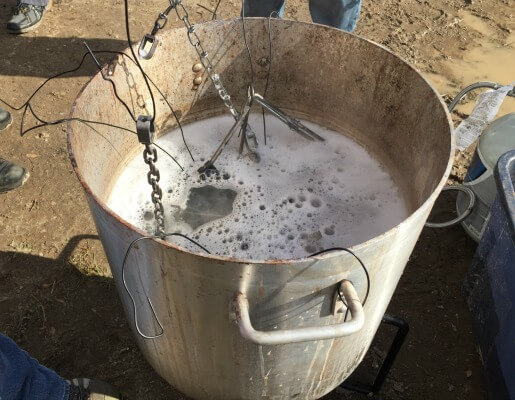
Practice setting the trap several times.
If the traps are new you'll want to remove the packaging oil applied to them by the factory.
This oil makes the traps very slippery and dangerous.
To remove the oil, use hot soapy water to wash them off or use a power washer with a degreasing agent.
Once the traps have the oil removed hang them outside for about a week.
This will cause a thin layer of rust to form on the trap which makes them easier to handle and less noticeable to a beaver.
You can also spray a little vinegar on the traps to speed up the rusting process.
After a thin layer of rust has developed you can then dye your traps using a Logwood Dye or Speed Dip.
The dye will make the traps turn dark black and prevent the traps from rusting any further.
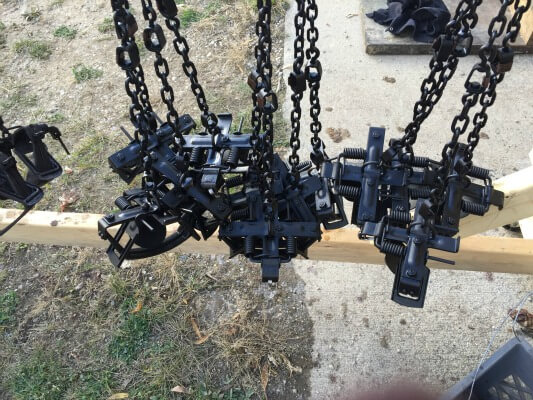
Waxing your traps after you dye them is also an option, but you should not wax conibear traps because the wax makes them slippery and unsafe to set.
Also, many people choose not to wax footholds that are used for water trapping.
Instead, consider only waxing your foothold traps that will be used on dry land.
Conibear Beaver Traps
The 330 conibear trap or body-gripping trap is the most common and effective trap used for beaver.
If you use the trap properly it's safe, easy to set and deadly against beaver.
Duke makes a good 330 body-grip trap that's very affordable compared to other brands. This versatile trap can be used in a variety of different sets.
The 330 trap is made up of 2 powerful springs which each have a safety latch, 2 jaws that close together when the springs are released, a trigger which can be bent into various positions, and a trigger lock which holds the set jaws in place until the trigger is released.
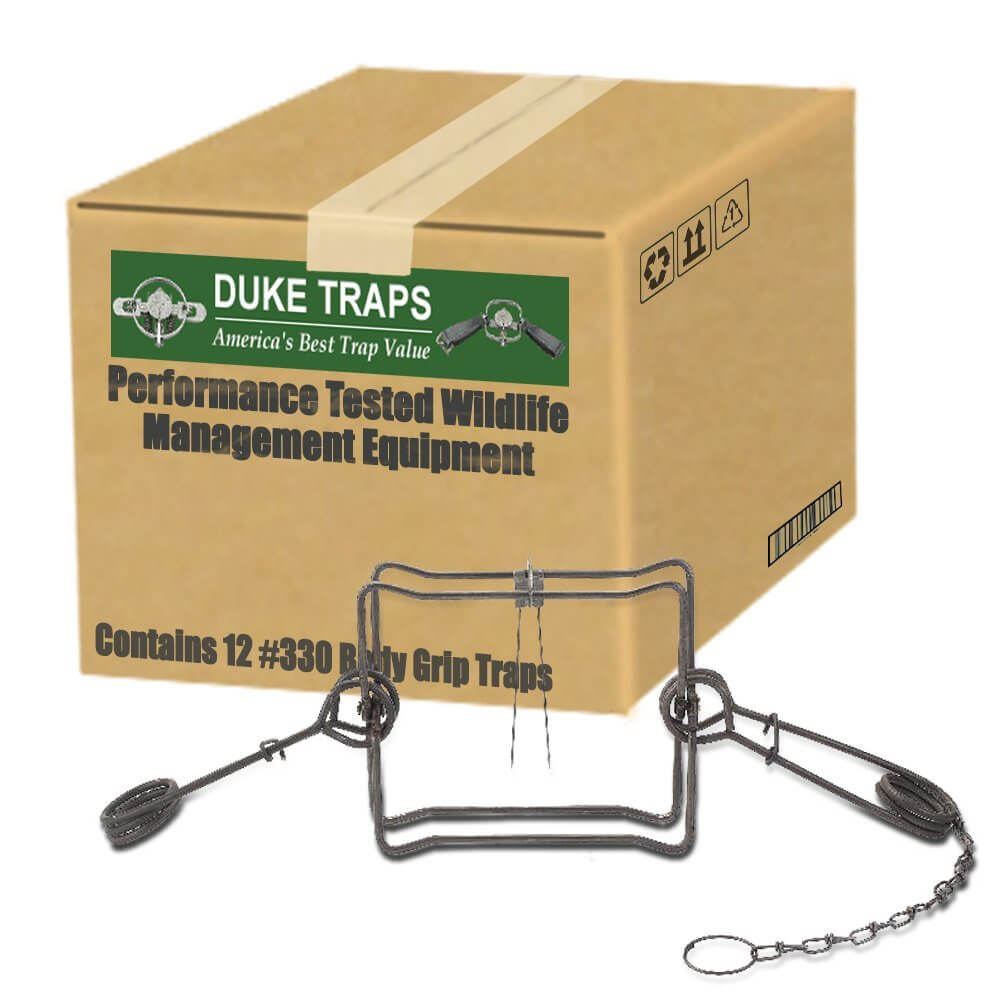
You should also use a conibear safety gripper when setting these large traps.
The safety gripper is a tool that clips around the 2 trap jaws preventing them from closing if you accidentally set the trap off.
Finally, for a few more safety precautions, many trappers choose to tie a hacksaw blade to their waders in case their hand ever gets caught inside the 330 conibear.
Since the springs are so powerful, it's nearly impossible to compress a spring with one hand so it's easier to cut the trap if necessary.
You should also carry a piece of rope in your pocket.
The rope can be looped though the spring holes and you can use the leverage of the rope to compress the spring and release your hand from the trap.
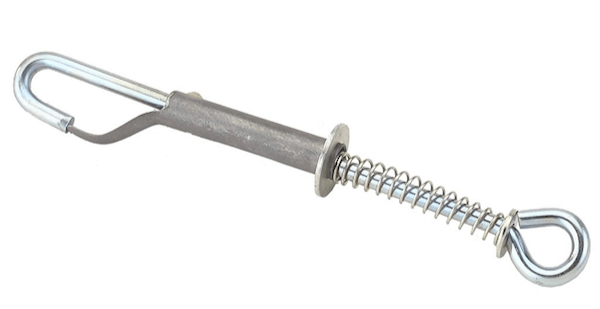
Even after many years of setting a 330, I'll admit it's still a little scary because they're just so powerful.
Use setting tongs to make compressing the springs easy, and always use the conibear safety gripper.
It's similar to putting a seatbelt on in your car while driving....only this is for trapping.
Foothold Beaver Traps
The MB750, Bridger #5 and CDR are all very popular foothold beaver traps.
They all work really well and the trap you use really just depends on personal preference.
Since beavers have large back feet, these foothold traps have a jaw spread of around 7 1/4 inches which will accommodate a hind foot catch on a beaver.
If you're strictly going for a front foot catch you could get by with a slightly smaller trap but I think it's best to stick with these larger footholds.
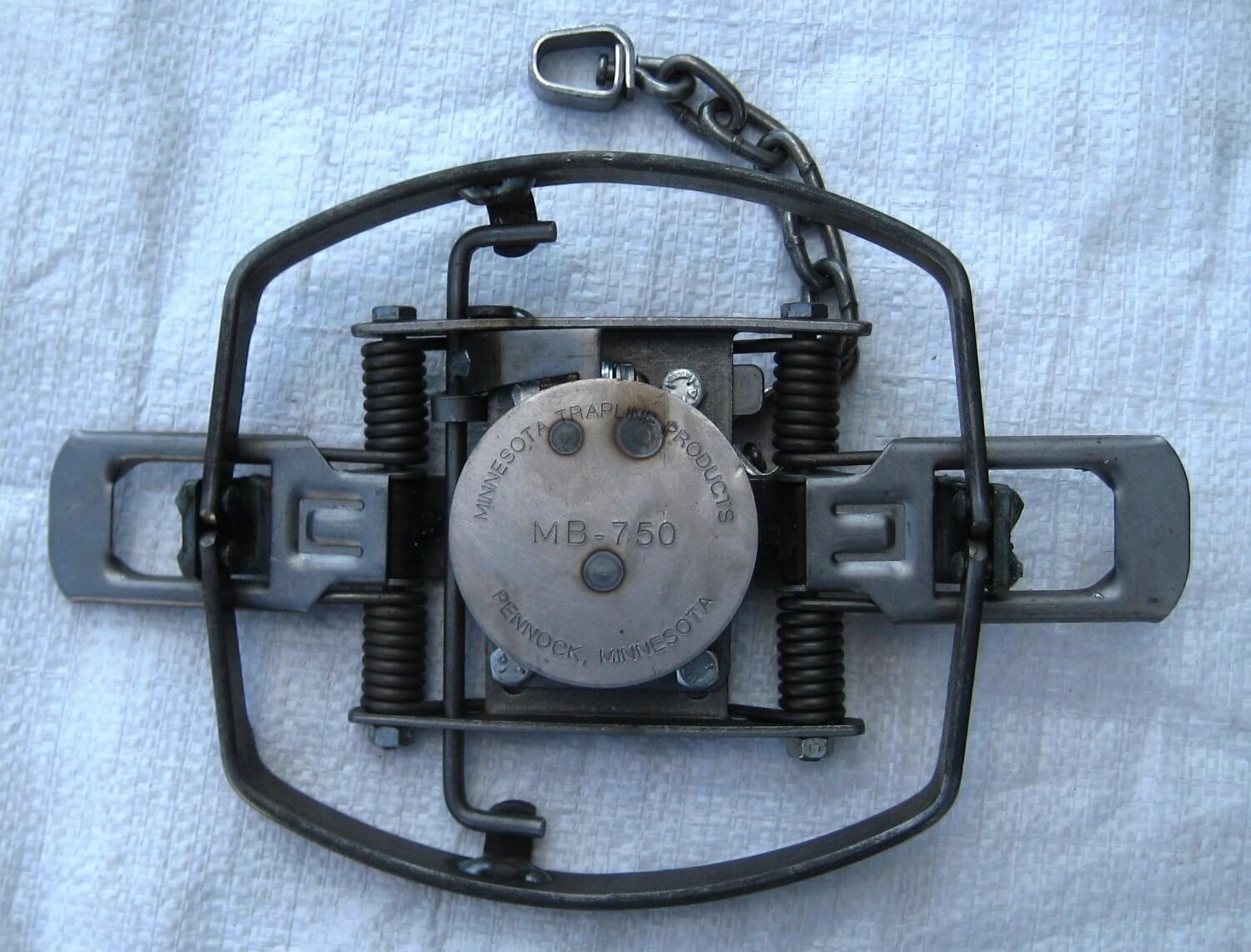
Footholds are a really versatile trap for beaver.
Castor mound sets, dam run sets or anywhere else a beaver is exiting the water is a great location to use a foothold.
Remember, anytime you set a foothold it's important to use a drowning cable or drowning rod in order to drown the beaver after it's caught.
Typically, you'll need about 2-4 feet of water to drown a beaver.
Overall - Beaver Traps
When it comes to picking a specific brand of beaver trap, everyone will have their own opinion.
The traps listed above are all great choices and there have been A LOT of beaver caught in these traps.
Just remember to take your time and make a good quality set.......the traps will do the rest!



